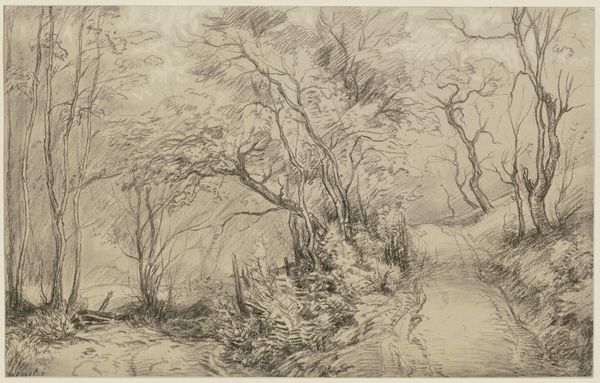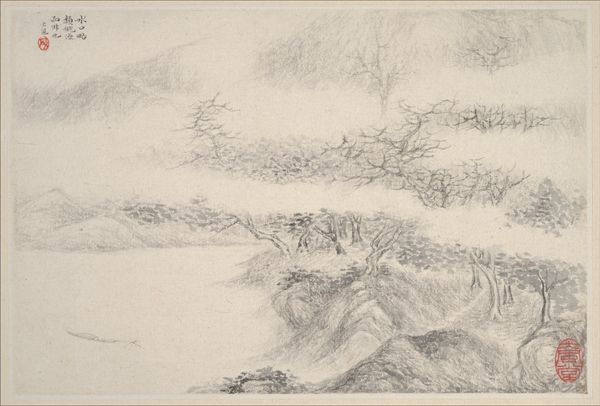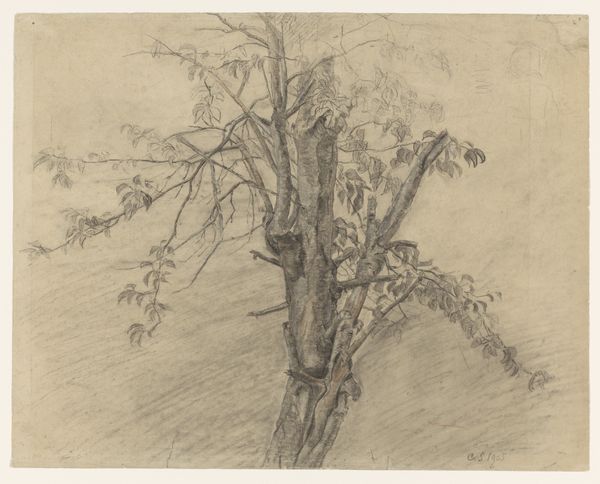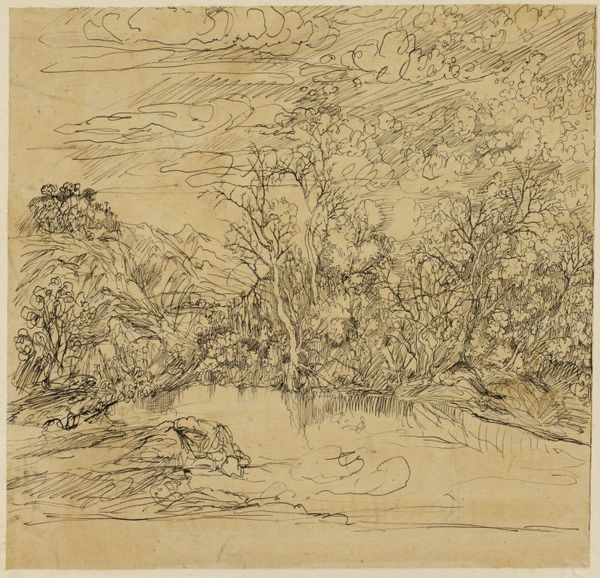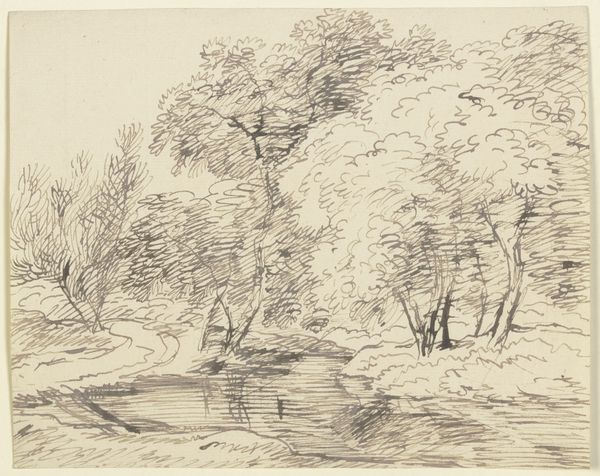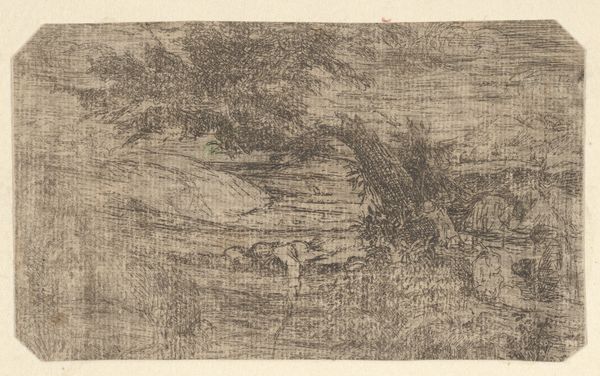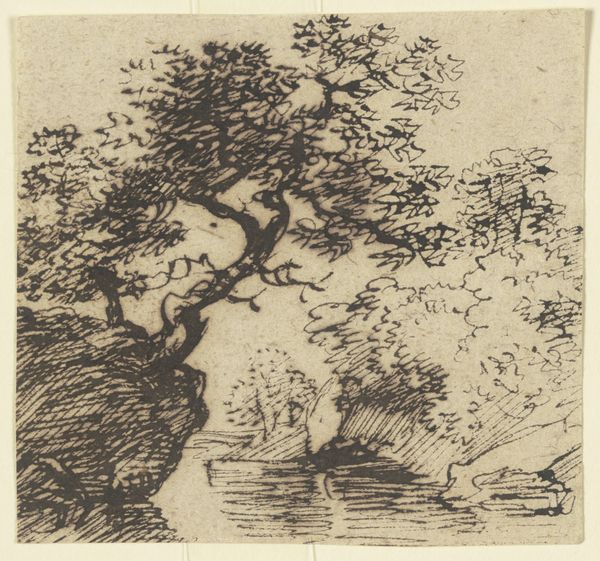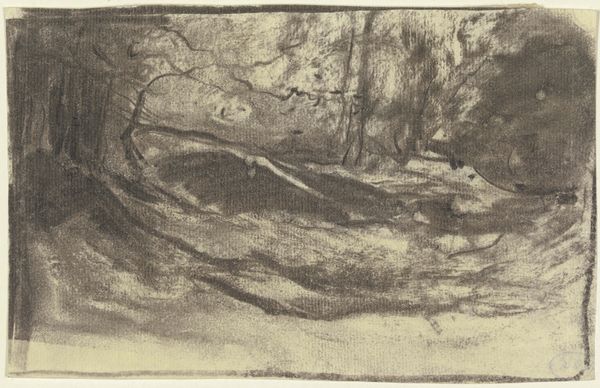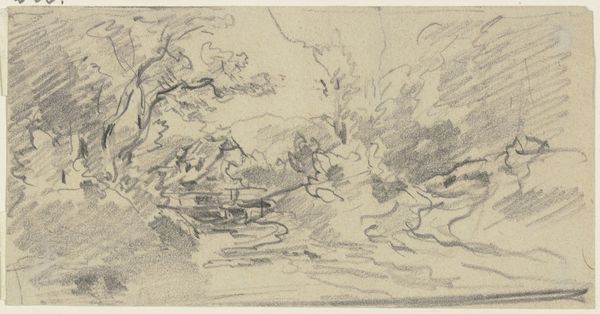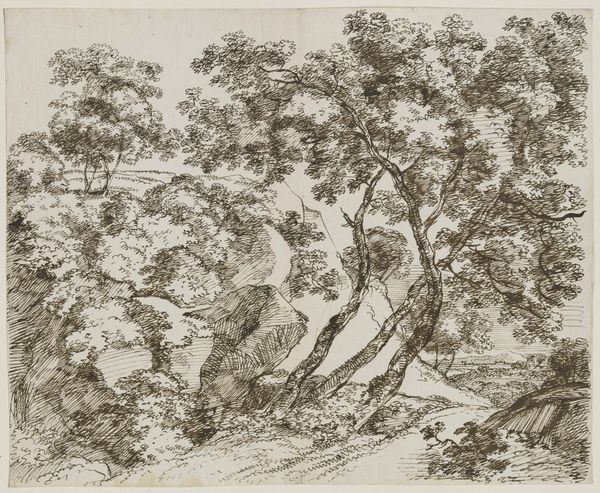
drawing, paper, pencil
#
drawing
#
16_19th-century
#
pencil sketch
#
landscape
#
paper
#
sketch
#
pencil
Copyright: Public Domain
Editor: Here we have "Waldpartie bei der Bürgelhöhe", a pencil sketch by Anton Burger, currently residing in the Städel Museum. It feels… unresolved. Like a fleeting impression caught on paper. What strikes you about this piece? Curator: What's compelling is how it positions the viewer. Consider the 19th-century context. The Bürgelhöhe likely held particular significance for the artist and perhaps for a local audience. Was this area being promoted for tourism, leisure, or even resource extraction? Sketches like this often played a role in shaping perceptions and interactions with the landscape. Editor: So it’s not just a simple nature study? Curator: Precisely. It prompts us to ask, who was this landscape *for*? Was Burger involved in a broader movement of artists seeking to document or idealize the German landscape? Understanding the political and economic currents of the time enriches our understanding of what seems like a straightforward pencil sketch. Do you see anything else that tells a story? Editor: Well, the starkness. Maybe it's just the pencil medium, but it feels… almost industrial. Not idyllic at all. Curator: Interesting. Consider the rapid industrialization of Germany at the time. Could this sketch be a subtle commentary on the encroachment of industry upon the natural world, even if unintended? Or, conversely, could it be a celebration of harnessing nature? The ambiguity itself becomes significant. Editor: I hadn't thought about it that way. I was just seeing trees! Curator: Exactly! Art, even in its simplest forms, rarely exists in a vacuum. Considering the social and political backdrop can unveil surprising layers of meaning and impact. Editor: I'll definitely be looking at sketches with new eyes now! Thanks!
Comments
No comments
Be the first to comment and join the conversation on the ultimate creative platform.
